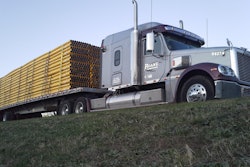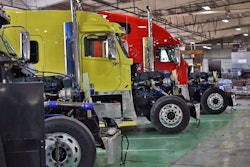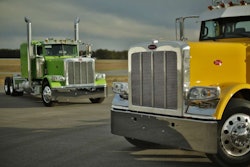Studies, proposed rules, Congressional letters, court injunctions, on-again/off-again enforcement — the saga over whether the Environmental Protection Agency should regulate the production and sale of glider kits has been a prominent item here in the pages of Overdrive over the past year. With all of the twists and turns the still-ongoing issue has dealt, you’d be forgiven for having more questions than answers.
For a quick clarifier, here’s where the issue of glider kit emissions stand currently.
Regs here to stay — for now
The wide-ranging Phase 2 emissions regulations (which are industry-wide regulations affecting manufacturers of all trucks, trailers and engines) enacted in 2016 dealt a major blow to the glider kit industry, which had been surging over the past half-decade, ballooning from less than 1 percent of total annual truck sales to nearly 5 percent. The glider-specific regulations took effect Jan. 1 of this year and capped glider kit assemblers at building just 300 trucks annually.
That cap is still in place and will be enforced (despite a flip-flop by EPA). That is, until the EPA finalizes a rule to repeal the 300-truck cap. The agency proposed the rule last November, and it seemingly had momentum. However, when — perhaps if — the rule will become final is a mystery. The wheels of bureaucracy move slowly, and federal rules often take years to come to fruition.

What’s more, the studies thrown at the EPA (see more on that below) regarding the final rule have both come under fire due to ethical concerns. EPA has signaled it is still planning to proceed with the rule, telling Overdrive in July it will “continue to work expeditiously to finalize a solution that provides regulatory relief and prevents any inadvertent economic harm to the glider industry while maintaining important air quality protections.”
Studies under scrutiny
Two competing studies about the emissions of glider kit regulations were filed with the EPA when it announced it was considering reversing the Obama-era emissions regs. One, funded by Fitzgerald Glider Kits and conducted by Tennessee Tech, found that emissions of glider kits were no greater than that of new trucks. The other, conducted by the EPA, found that glider kits do produce emissions of nitrous oxide (NOx) and particulate matter at higher levels than modern engines.
Both of those studies now are under scrutiny, facing inquiries from the bodies overseeing the researchers.
Tennessee Tech announced in February it is reviewing its study due to ethics concerns raised by faculty members about the research, given that Fitzgerald funded the study and is a major donor to the university, among other issues. TTU President Philip Oldham said the school is reviewing the “methodology and accuracy” of the research and told EPA to ignore its conclusions until the investigation was completed. Read more on that inquiry here.
EPA’s own study was hit with an inquiry just this month. EPA’s Office of Inspector General said it is reviewing whether EPA staffers acted improperly during the study by working in conjunction with Volvo Trucks, who has lobbied in favor of regulating glider kit sales. Read more on that inquiry here.
However, this study was not the study used to justify the regulations when they were first issued in 2015. The EPA told Overdrive in 2016 that gliders had been on their radar for some time, arguing they presented an outsized share of emissions of new vehicle sales relative to their marketshare. The 2017 study was only meant to derail EPA efforts to roll back Phase 2’s glider cap.











